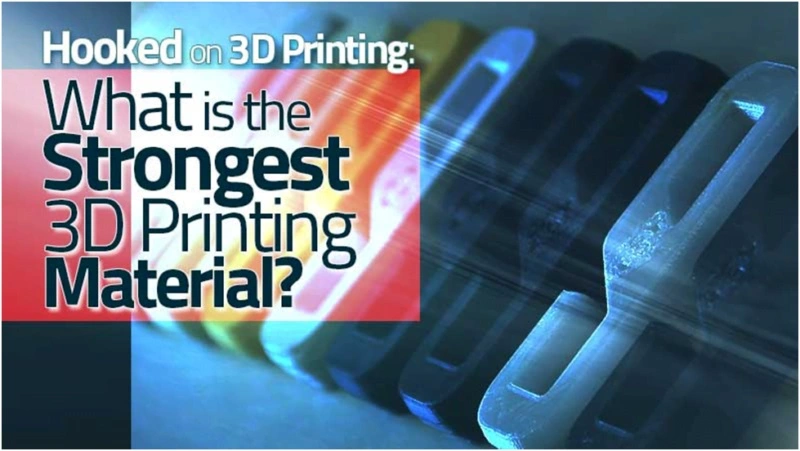What is the strongest 3D Printer Filament? This is a question many are asking as 3D printing technology improves.
Recently in an online discussion about this subject, someone stated,” Filament longevity is important because you’re going to have to replace this over again if you don’t take care of your printer.”
That is an accurate statement, especially if you use your printer for a long period of time. It may also be a good idea to purchase a few extra bottles of filament so that you are prepared in case your current supply runs out.
3D Printing Materials
There are three main types of 3D printing materials. All three are strong enough to make prints, but the most popular amongst enthusiasts is polylactic acid or PLA.
The reason that it is popular is because it is made from recycled plastic bottles. They are recycled so that they can be used again.
Polylactic acid is one of the most popular 3D printing materials. Another is nylon/spandex mixes. They have similar characteristics, but some offer better heat conductivity, which makes them preferred by some manufacturers.
One of the best characteristics of these two filaments is that they are easy to clean. They also resist alkali and most solvents.
Types of 3D Printing
There are four more types of popular high strength 3D printing service. Each has its own strengths and weaknesses, depending on what they are used for.
In addition to the high-strength polymers, there are also low-density PLAs. Low-density ones have less volume per square inch, but they do not offer as much strength as high-strength polymers.
Tungsten supports the toughest and most durable of all 3D printing materials. It is usually coated in a special epoxy compound.
Because it is so tough, it is typically only used in applications that require solid color prints. It is also used in laser sintering.
Some manufacturers combine high strength with other characteristics to produce a more durable finish.
Characteristics of Polylactic
Plastics are the most popular choice. They have many of the characteristics of polylactic acid and nylon/spandex blends but are stronger.
These products are mixed with other materials to create new composite materials that offer even more durability.
This allows manufacturers to create composite materials that are as strong as plastics, yet are lighter in weight.
3D Printing Industry
The composites are also very popular in the 3d printing industry. They offer some of the best characteristics of both plastics and composites but also have a lower cost to produce.
They are generally used for thicker models and in areas where weight and strength are an issue. They can be used for use in a wide range of applications.
3D Printing Technology
Finally, carbon fibers are the pure material used in 3D printing. The carbon fiber is extremely strong and is generally used for the printing of complex textures.
The best qualities of carbon fiber are great for bonding surfaces of all kinds, from plastics to composites. In this way, carbon fibers have been central to the success of 3D printing technology.
But 3d printing composites don’t offer the same qualities of durability and strength as carbon fibers. This is because they are stiffer, which makes them less likely to damage when they are placed in areas of heavy equipment or other mechanical stress.
However, composites have excellent moisture resistance, and they can be made with a variety of synthetic fibers. This makes composites ideal for use in a wide range of applications.
They also offer an extended shelf life, which means they can last for many years without replacement.
Conclusion:
One way to increase the shelf life of 3d printing plastics is to avoid exposing them to harsh conditions.
This includes keeping the plastic filaments away from the air, as heat and moisture can cause degradation over time.
It also includes avoiding placing hot objects on plastic filaments, as this can encourage buckling. Plastic sheets can even be placed between the three layers of resins to further prevent buckling.



![itms-appss://apps.apple.com/app/instagram/id389801252?vt=lo [2024] 3 itms-appss://apps.apple.com/app/instagram/id389801252?vt=lo](https://trendingserve.com/wp-content/uploads/2024/06/All-the-Information-You-Require-about-Instagram-on-Apple-Devices.webp)
